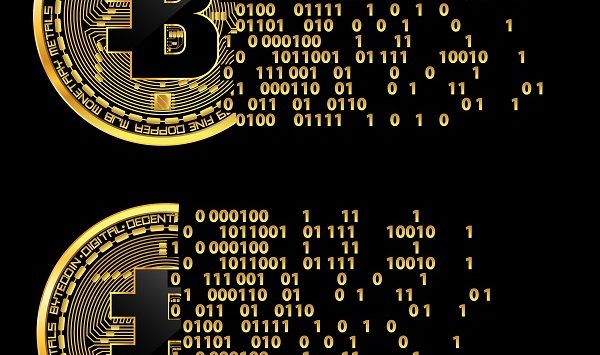The views and opinions expressed in this issue brief are those of the authors and do not necessarily reflect the official policy of GPI.
Issue Briefs

Gross Imaginary Product creates fake wealth
Martin Hutchinson
January 1, 2018
In the era of crypto-currencies, I propose a new economic statistic: Gross Imaginary Product, GIP. This can be defined as the total output at market prices of all products and services which do not actually exist. Contrary to popular superstition, not all the $350 billion value of crypto-currencies is imaginary. There are some real values there. Conversely, in the physical economy, in California, London, Japan and in other places distorted by “funny money” there are apparently “real” values that are in truth purely imaginary. Needless to say, GIP has soared in an era of fraud and fantasy like the present, and appears to be at an all-time high.
Phantom companies, Ponzi schemes
The first recorded instances of Gross Imaginary Product, were the twin financings, equity for “a company for carrying out an undertaking of great advantage, but nobody to know what it is” in 1720, and the bond issue for the non-existent Republic of Poyais in 1822, (the latter was given credibility by the description of the capital’s imaginary cathedral.) These were both quite small deals, however, and merely scratched the surface of what subsequent bull markets showed to be possible.
In 1920, an especially famous though modest example of GIP was devised by Charles Ponzi, who absorbed some $20 million of people’s savings in a scheme to make an arbitrage profit out of international postal coupons. Again however, despite this scheme’s fame, this was only small change. $20 million was only 0.022% of 1920’s GDP of $88 billion; GIP was not yet a significant factor in the economy.
Salad Oil swindle
In 1963, the Great Salad Oil swindle involved loans being issued against $150 million of salad oil when only $8 million worth was in the tanks – inspectors would be fooled by tanks filled with water, with just a little salad oil on top. The GIP from this scheme alone was again about 0.022% of GDP of $650 billion – the GIP/GDP ratio had not increased significantly over the intervening 43 years.
Gross Imaginary Product comes of age in 2008
The 2008 financial crash saw an upsurge in GIP. In housing finance, there was a huge volume of “subprime” mortgages, loans to people who had neither the income to afford them, nor the prospects to have any chance of repaying them. Then there was the Bernie Madoff scam, when around $36 billion was invested in imaginary assets, with $18 billion repaid to early investors, some of whom got out with profits.
The GIP in 2008 appears to have been some $100 billion, counting Madoff, fictitious subprime loans and fictitious derivatives and CDO squared contracts. This represented about 0.7% of U.S. GDP, already 30 times the relative size in 1920 and 1963.
Funny Money monetary policies
By 2008, the “funny money” monetary policies (they began in 1995) had already inflated GIP as a percentage of total output. It should be noted however that by 2008 GIP no longer simply consisted of Ponzi schemes, embezzlement and legal fraud.
While Madoff’s criminal activities constituted a Ponzi scheme, much of the remainder of GIP consisted in perfectly legal loans originated and made by reputable financial institutions, and derivatives contracts created by Wall Street whizz-kids. While the imaginary quality of the GIP remained unchanged, its questionable sources were diversifying and extending themselves into the mainstream economy.
The explosion of funny money
Today, after more than 9 further years of “funny money”, GIP has exploded. For a start, there are the crypto-currencies, by definition imaginary, in the sense that like all fiat currencies they exist only at whim, with the difference that the whim is that of a bunch of basement-dwelling nerds, rather than that of a bunch of pompous overstuffed Keynesian central bankers. The nerds have a better grasp of economics than the central bankers, and have mostly avoided creating excess amounts of their imaginary money.
Crypto-currencies
What is more, the nerds have found sources of genuine value for their money. These include true anonymity, allowing crypto-currencies to replace Swiss banks as government-proof havens – any instrument that facilitates this is a true boon and value to the global economy. Then there are new software components, such as a fully decentralized Internet, and the payment mechanisms, which can be used to facilitate real-world transactions and hence have real value.
However, of the $358 billion total value of crypto-currencies as I write this, only about $6 billion are truly anonymous, and another $5 billion have worthwhile software projects attached. In addition, crypto-currencies have the short-term potential to be used as payments mechanisms in countries such as Kenya where many transactions are carried out over mobile phones networks. This might soon cover perhaps $200 billion of GDP’s transactions, for a value of $40 billion (US M1 being one fifth of GDP). Add to this the value of such additions as a crypto-currency social network, and you get maybe $60 billion in total genuine value in the crypto-currency nexus. That leaves $298 billion in GIP at today’s prices.
Silicon Valley’s zombie companies
In today’s market, crypto-currencies are by no means the only sources of GIP. In Silicon Valley, for example, there are now many zombie companies. They have received vast amounts of private equity funding at celestial valuations, but have no realistic hope of ever justifying those valuations, or even in many cases of making a profit. Uber, for example, received funding at the top of the cycle at a $68 billion valuation; now Uber employees are reported to be selling out to Japan’s Softbank at a much lower valuation. That’s billions in GIP that vanished overnight. So many Silicon Valley companies have existed for a decade or more, without ever making a profit, while receiving endless private equity rounds from besotted over-funded capitalists. If they have no near-term prospect of making a profit, yet are propped up by funny-money-created pools of money, they are just GIP. We can take a conservative estimate of the GIP in Silicon Valley today; it is at least $500 billion.
Zombie companies in China and Japan
Globally, funny money in all rich countries has caused a tsunami of GIP wherever it has appeared. In Japan and China, for example, there are zombie companies that should have been bankrupt years ago. Yet they are kept alive by endlessly prolonged loans from a complacent banking system. Not all the value of those companies is GIP, but the excess of their assets over the value of their earning capacity certainly is; it is GDP that would not exist if the market were allowed to operate in a properly Schumpeterian manner: i.e. let failed companies fail.
European GIP
In Europe, funny money has primarily produced government-sponsored GIP. At the peak of its over-inflation, for example, about two thirds of the Greek economy was GIP. Its inhabitants were paying themselves $32,000 in GDP per capita compared with under $10,000 in comparably productive Bulgaria, Romania and Macedonia. That GIP has lessened now, and the similar level of GIP in Ireland and Portugal has at least for the moment disappeared.
On the other hand, German electricity now costs about twice what it did before the solar panels craze, and it is now three times what electric power costs in the United States. The excess cost of the output of all those windmills and solar panels is as imaginary as you can get, pure GIP.
Inflated property values in London
In Britain, for the last decade, houses in London have changed hands at a large multiple of what their inhabitants could afford, if they were buying them de novo. The inflation is due to three factors: interest rates below zero in real terms, an artificial influx of rich foreign buyers who pay very little tax, and a “council tax” system that grossly under-taxes very expensive properties. The air in London’s property market must be let out, doubtless uncomfortably, in a process that the Financial Times and the Economist will undoubtedly blame on Brexit. Meanwhile, it represents Gross Product that is entirely imaginary: pure GIP!
GIP in America
Back in the United States, real estate is also a source of GIP, in the ultra-expensive enclaves of Manhattan and San Francisco where real estate prices have made it impossible to employ people locally, but also in all the shopping centers and department stores that have lost their economic raison d’etre, as Internet shopping increasingly hollows out the “bricks and mortar” retail sector.
Going forward, surplus shopping centers will have very little economic value. It should be clear to all that once it stop making a profit, all this idle commercial real estate becomes pure GIP.
In addition, Wall Street has not stopped creating GIP. Indeed, much of the derivatives sector is pure GIP, hedging risks that do not need to be hedged, thereby hopelessly obscuring the true economics of the business. The value of GIP in these sectors can be conservatively estimated at another $500 billion, but we should recognize it may be higher than this.
Imaginary wealth fuels imaginary economies
Gross Imaginary Product has exploded everywhere while real interest rates have been kept below zero. Such rates subsidize assets and activities that have no value. The highest percentage of GIP may well be in Japan, which has had “funny money” policies for the longest period. However, in the United States, from the very rough calculations above, we can tentatively say that GIP is now roughly $1.3 trillion, or 7% of GDP. That is about ten times its relative level in 2008, and 300 times its relative size in the halcyon days of 1920 or 1963. Assuming the rate of increase is approximately logarithmic, we can expect the entire U.S. economy to be imaginary by around 2033 – not coincidentally, this is the year Social Security goes bust.
Sane Fed policies wanted
As I write, Jerome Powell has sailed through the Senate Banking Committee as the next Chairman of the Fed. It is to be hoped that he takes note of this GIP problem, and takes steps as soon as he is in office to raise the Federal Funds rate to around 4%, and then pledges to keep it there, however loud the squealing from the newly insolvent. Happy as 2017 has been for investors in crypto-currencies, in 2018 reality in the U.S. economy needs to make a swift comeback.
 Martin Hutchinson is a GPI Fellow. He was a merchant banker with more than 25 years’ experience before moving into financial journalism. Since October 2000 he has been writing “The Bear’s Lair,” a weekly financial and economic column. He earned his undergraduate degree in mathematics from Trinity College, Cambridge, and an MBA from Harvard Business School.
Martin Hutchinson is a GPI Fellow. He was a merchant banker with more than 25 years’ experience before moving into financial journalism. Since October 2000 he has been writing “The Bear’s Lair,” a weekly financial and economic column. He earned his undergraduate degree in mathematics from Trinity College, Cambridge, and an MBA from Harvard Business School.